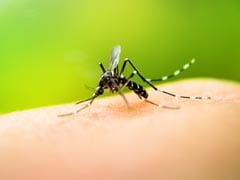By making simple dietary and lifestyle changes, you can effectively cut down on salt and improve overall health. Here are five tips to reduce salt intake.

5 Tips To Reduce Salt Intake
Excess salt consumption is a growing health concern worldwide, contributing to high blood pressure, heart disease, stroke, and kidney problems. According to the World Health Organisation (WHO), most people consume double the recommended daily salt intake, which should be less than 5 grams (about one teaspoon) per day. Processed foods, fast food, and excessive seasoning contribute to increased sodium intake. However, reducing salt does not mean compromising on taste. By making simple dietary and lifestyle changes, you can effectively cut down on salt and improve overall health. Here are five tips to reduce salt intake.
How to reduce salt intake in diet
The Centres for Disease Control and Prevention (CDC) warns that high sodium intake is one of the leading risk factors for cardiovascular diseases. Here's how you can cut down on salt without losing flavour in your meals.
1. Cook with fresh ingredients
Preparing home-cooked meals helps control the amount of salt in your food. Use fresh vegetables, lean meats, and whole grains instead of processed foods. Avoid packaged seasonings, sauces, and ready-to-eat meals, as they contain hidden sodium. Experiment with herbs and spices like garlic, ginger, cumin, and basil for flavourful, salt-free meals.
2. Read food labels carefully
Many packaged foods contain hidden sodium, even those that do not taste salty. Check for sodium content on food labels and choose low-sodium or salt-free options. Look for terms like “sodium-free,” “low sodium,” or “no added salt.” Avoid foods with monosodium glutamate (MSG), baking soda, and preservatives, as they increase sodium intake.
3. Reduce intake of processed and restaurant foods
Packaged and restaurant foods contain excessive amounts of salt, contributing to high sodium intake. Cut down on chips, canned soups, instant noodles, pickles, and frozen meals. When eating out, request less salt in your dishes or opt for grilled and steamed options. Swap salted snacks with fresh fruits, nuts, and homemade roasted snacks.
4. Gradually decrease salt in meals
Sudden salt reduction may seem difficult, but a gradual approach helps your taste buds adjust. Reduce salt intake by half while cooking and increase flavour with lemon juice, vinegar, or mustard. Try flavoured oils, fresh herbs, and spice blends instead of salt-based seasonings. Use unsalted butter and homemade salad dressings instead of high sodium alternatives.
5. Increase potassium-rich foods
Potassium helps balance sodium levels and lower blood pressure, according to the American Heart Association (AHA). Eat bananas, oranges, spinach, sweet potatoes, and beans, which are rich in potassium. Replace processed snacks with yogurt, nuts, and dark leafy greens. Choose low-sodium dairy products and whole grains for better heart health.
Reducing salt intake is a small yet powerful step toward a healthier heart and overall well-being. Adopting mindful eating habits ensures that you stay healthy without compromising on taste.
Disclaimer: This content including advice provides generic information only. It is in no way a substitute for a qualified medical opinion. Always consult a specialist or your own doctor for more information. NDTV does not claim responsibility for this information.
DoctorNDTV is the one stop site for all your health needs providing the most credible health information, health news and tips with expert advice on healthy living, diet plans, informative videos etc. You can get the most relevant and accurate info you need about health problems like diabetes, cancer, pregnancy, HIV and AIDS, weight loss and many other lifestyle diseases. We have a panel of over 350 experts who help us develop content by giving their valuable inputs and bringing to us the latest in the world of healthcare.














